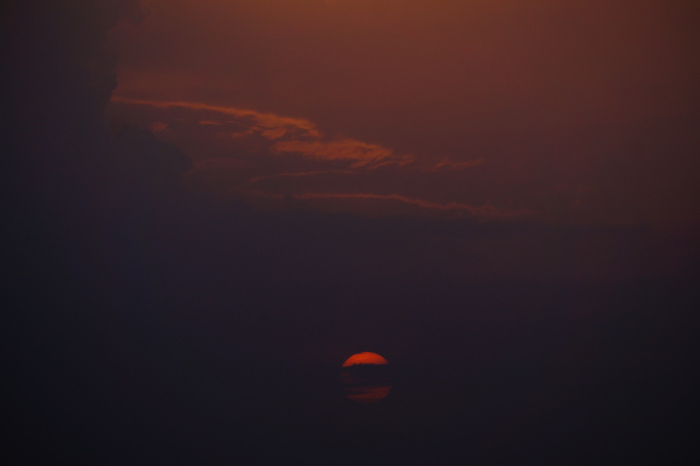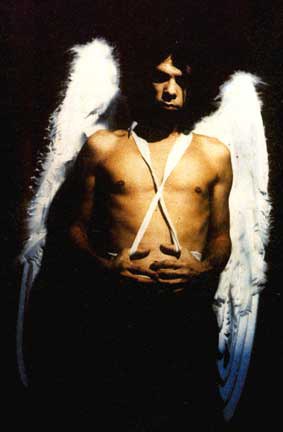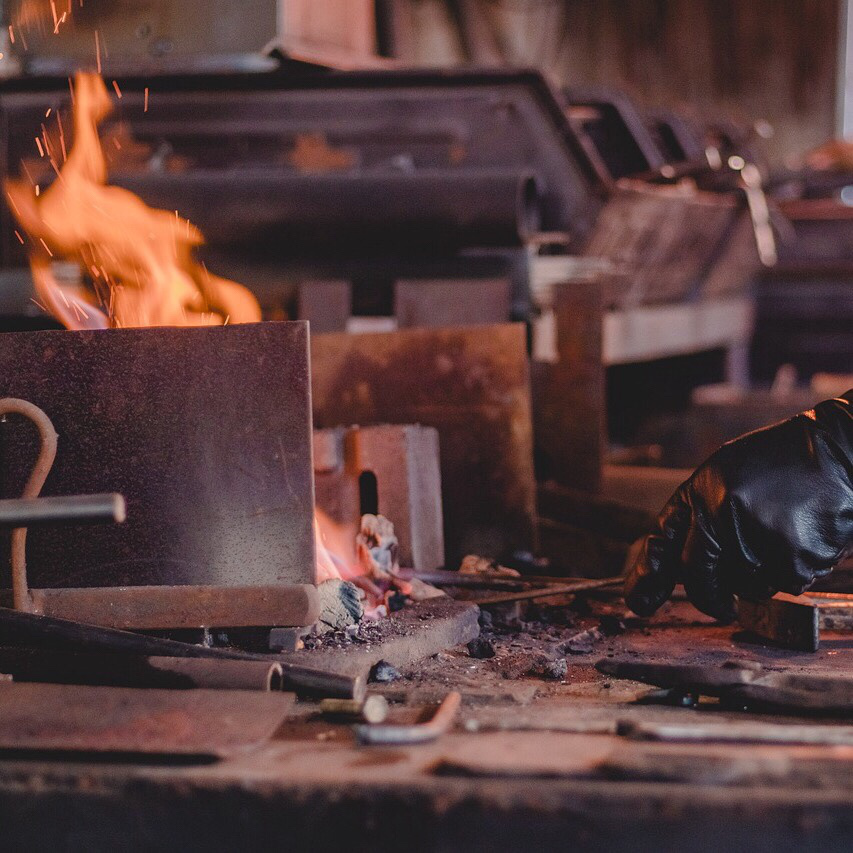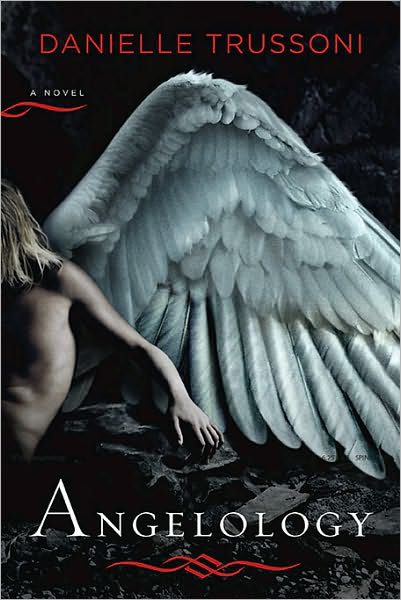Sir Peter Michael, owner of 5 star vinous hotel experience The Vineyard, was directly inspired by the 1976 Judgement of Paris; the famous play-off between the traditional wines of France and the upcoming wines of California.
It’s therefore fitting that they offer a tasting menu which pays tribute to the original event, accompanied only by French and Californian wines.
Comprised of 7 courses, each dish allows you to decide which wine works best with the food, and if you prefer the French or US offering. Opting for the full sensory experience I decided to taste my wines blind, replicating the conditions of the original event.
(Note: The individual dishes change seasonally as do the perfectly paired wines. What follows are my thoughts based on those served on the day).
Course 1 – Beef sirloin tartar, sorrel sorbet, raisins and bone marrow crumb matched with:
- Peter Micheal Winery (PMW) L’Aprés Midi (Sauvignon/Semillon) 2015, –
- CaliforniaCháteau Tour des Gendres (Sauvignon/Semillon) 2015, Bergerac Sec, France
The US wine managed to trick me as it was in the lighter style. The Bergerac boasted a silky texture with melon and tropical yellow fruit, and seemed almost too intense for their climate. The PMW had a lighter colour and, alongside rich buttery oak, was characterised by a light airy character and peach and tangerine rind.
1/0 to the USA
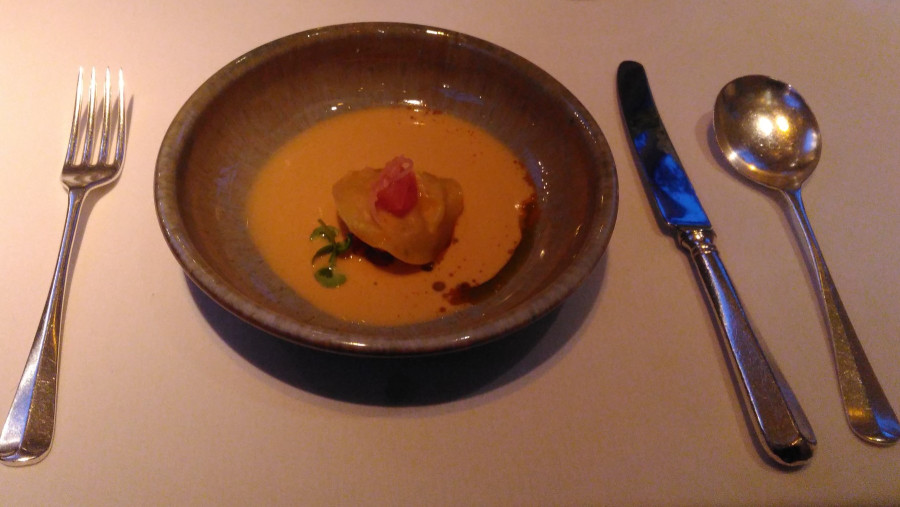
Course 2 – Lobster ravioli, citrus bisque, grapefruit, pickled ginger, basil matched with:
- Donelan ‘Nancie’, Chardonnay 2012, Sonoma, California
- Sophie Cinier (Chardonnay) 2014, Pouilly-Fuissé, France
The intense lime, mineral nose and refreshing acidity made the Poilly-Fuissé easy to pick out against the rich lemon curd style of the Donelan, but it was this weight that made it blend all the better with the Lobster and the Cajun style sauce.
2/0 to the USA
- Course 3 – Foie gras ganache, pistachios, cherry and brioche ice cream matched with:
Domaine Loew, Les Cormiers Pinot Gris 2014, Alsace, France
Just one wine was to be matched with this course but, served in an opaque black glass we had no identifier as to whether it was white or red, let alone French or American.
The intensity and sweetness of the lemon matched up to the cherry very well, almost to the point of revelation. A touch of cakey/bready spice in the wine very reminiscent of shortbread, cleansed the palate after the rich foie gras.
By default France wins, but its 2/1 to the USA
Course 4 – Roasted cod, cauliflower, curry and coconut matched with:
- Peter Michael Winery Le Moulin Rouge (Pinot Noir) 2008, California
- Domaine Audoin, Cuvée Marie Ragonneau (Pinot Noir) 2010, Marsannay, France
The PMW felt a little artificial, with the acid a touch too high and a mid-palate that didn’t have enough to excite. It was straightforward compared to the Audoin that delivered a floral vanilla nose and redcurrant fruit. Soft and delicate it blended well with the curry and the coconut.
France wins, making it all square at 2/2
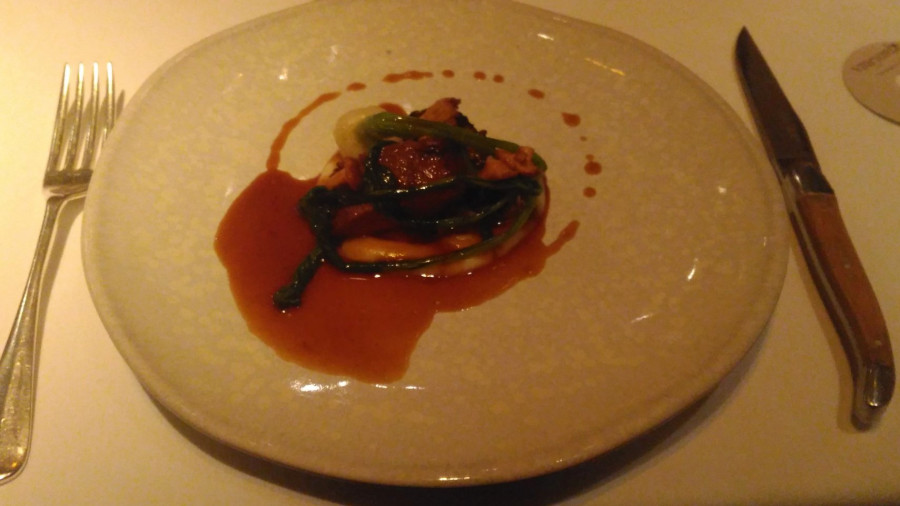
Course 5 – Loin of lamb, turnips, baby gem, girolles and lamb jus matched with:
- L’Aventure, Cóte á Cóte (Rhone blend) 2007, Paso Robles, California
- Fortia 2012, Cháteauneuf du Pape, Rhone, France
Both made using the signature Rhone varieties of Grenache, Syrah and Mourvédre, the French offering was lighter in colour and more floral than its counterpart, offering up ripe black cherry fruit. A mouth-watering acid worked very well with the lamb jus.
The L’Aventure, inky and youthful purple in colour despite its age, was dense, rich, spicy and alcoholic, and a seriously robust wine. Mistaking this power for the classic hallmarks of Cháteauneuf and the fact that the depth of colour confused me, I guessed this one wrong.
Regardless of the confusion, the Cháteauneuf worked best.
France take the lead 3/2
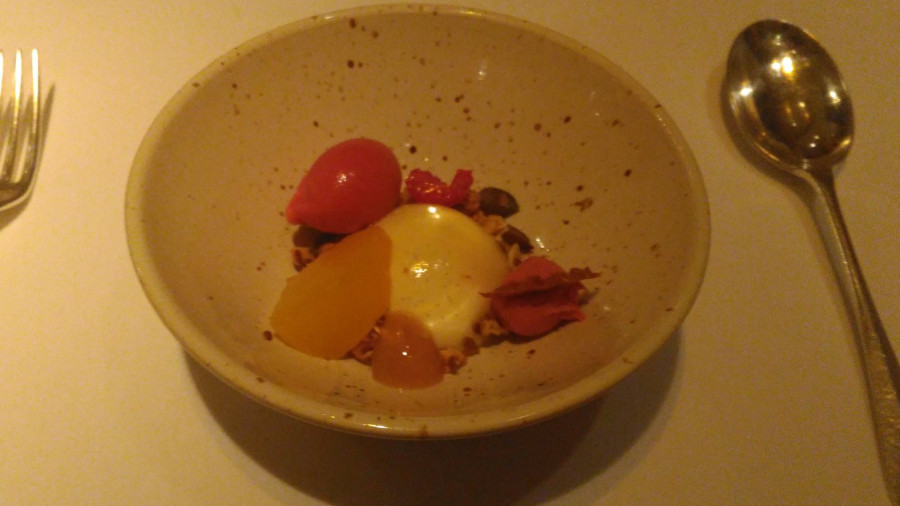
Course 6 – “Peach Melba”, raspberry sorbet, almonds matched with:
- Elysium Black Muscat 2014, Andrew Quady, California
Another single wine served in black opaque glassware to further intrigue and confuse, and this one completely outwitted me.
Thick and gloopy in consistency, this was syrupy and full of rich tropical melon and pineapple. With a lip-smacking acidity it went wonderfully with the raspberry and the overall acidity of the dish, BUT it transpired that this was a sweet red wine!
Once armed with this information I found tinned raspberry and plum, but this was a good example of tasting with your eyes vs. tasting with your mouth
The US win by default. All square at 3/3
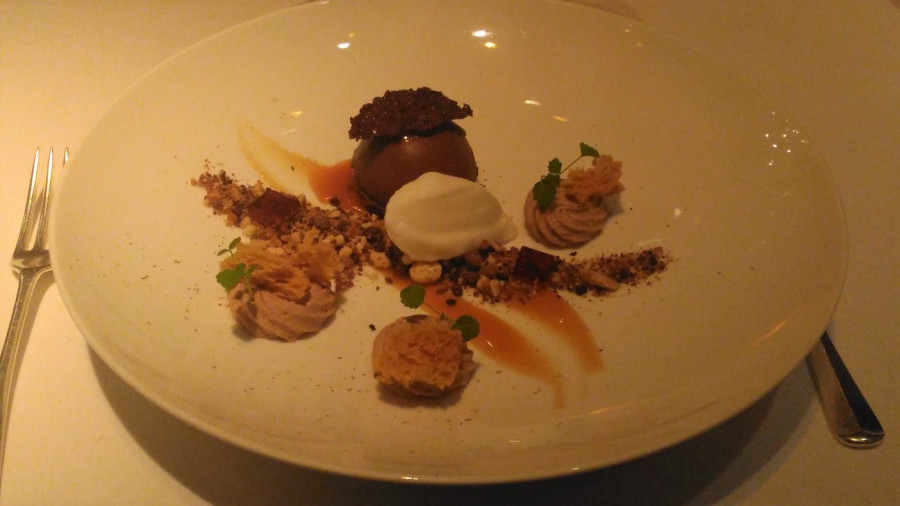
Course 7 – Chocolate, caramel, hazelnut and tonka bean matched with:
- Justin Vineyards, Obtuse (Cabernet Sauvignon) 2012, Paso Robles, California
- Cháteau Coutet (Semillon) 1998, Barsac, France
The Cháteau Coutet was made in an oxidative style, amber in colour, and offering bruised brown soggy apples, thick honey, and summer cider. Having said that, the slushy quality went very well with the peanut butter food and caramel notes of the food.
The Obtuse, whilst having an over-the-top (in my opinion) sweetness did actually pair well with the numerous sweeter aspects of this dessert (especially the chocolate), but was quite singular in tone.
A tough call at the final hurdle but: France wins 4/3
Enjoyed this article? Please take a moment to ‘Like’ and share using the buttons below. Keep looking around my site for more of the same. Cheers! Advertisements Share this:
